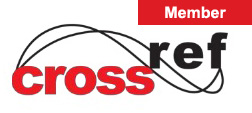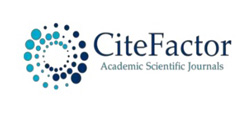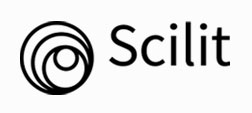Top Links
Journal of Nutrition and Health Sciences
ISSN: 2393-9060
Reducing Toxic Constituents of Ginkgolic Acids Content and Improving Bioactive Flavonoids Content from Ginkgo Biloba Leaves by High Temperature Pretreatment Processing
Copyright: © 2021 Ariff S. This is an open-access article distributed under the terms of the Creative Commons Attribution License, which permits unrestricted use, distribution, and reproduction in any medium, provided the original author and source are credited.
Related article at Pubmed, Google Scholar
High temperature pretreatment was developed in this article to remove the main toxic constituents of ginkgolic acids (GAs) from Ginkgo biloba leaves (GBLs) and improve the bioactive flavonoids content by water extraction. To optimize the effects of high temperature pretreatment process parameters on removing toxic GAs to the limited level and improving content of bioactive flavonoids, a Box-Behnken design (BBD) combined with response surface methodology (RSM) was also conducted. The results showed that the content of GAs could be reduced to 4.11 ppm and the highest content of flavonoids could reach 3.51 % under the optimized conditions of high temperature pretreatment process of 177 °C with water extraction at 96 °C at a liquid-to-solid ratio of 56:1. The content of toxic GAs substantially decreased by 83.50% while the content of bioactive flavonoids increased by 44.30% compared with the conventional water extraction method. Moreover, the new process was more efficient, environmentally friendly and could get avoid of a subsequent multi-step process of removing toxic GAs. The crude extracts were then purified by macroporous resin to obtain the 60% ethanol fraction. After purification, the flavonoids content increased to 43.50% while the GAs were not detected. The main compounds of 60% ethanol fraction were identified by UPLC-QTOF-MS/MS. Antioxidant activities including reducing powder, 2,2-diphenyl-1-picrylhydrazyl (DPPH) radical scavenging, and OH· scavenging assays all showed that the 60% ethanol fraction was better than the butylated hydroxytoluene (BHT) standard.
Keywords:Ginkgo Biloba, Ginkgolic Acids, Flavonoids, High Temperature Pretreatment, Response Surface Methodology, UPLC-QTOF-MS/MS, Antioxidant Activities
Ginkgo biloba L., the sole surviving species in the family Ginkgoaceae, is commonly known as a “living fossil” [1]. This archean plant is native to China, but has been cultivated worldwide for its horticultural, timber, and medicinal properties. GBLs contain various species of active ingredients, such as ginkgolides, bilobalide, flavonoids, proanthocyanidins, alkylphenols, simple phenolic acids, and so on [2]. Most of the Ginkgo biloba extract (GBE) were made from GBLs, which have two types, namely, full extracts and standardized extracts. GBE containing flavonoids are one of the most popular herbal supplements widely used for medicaments, foods, and cosmetics. Pharmaceuticals derived from GBE have been used to treat tinnitus, cognitive impairment and Alzheimer’s, retinal, cardiovascular, ischaemia cerebrovascular, peripheral vascular, diabetic nephropathy, and other diseases [3]. Among the various ingredients of GBLs, flavonoids including flavones, flavonol glycosides, biflavones, proanthocyanidins, and isoflavonoids, are one of the most important active ingredients in G. biloba. Flavonoids exhibited remarkable effects, including anti-oxidation, anti-cancer, anti-bacterial, anti-viral, anti-inflammatory, and neuroprotective effects [4-7]. Hydrolysates of flavonol glycosides contain three predominant flavonol aglycones, that is, quercetin, kaempferol, and isorhamnetin [8] (Figure 1a). Meanwhile, GAs were the toxic ingredients, which have cytotoxic potential and can induce neuronal death and activate protein phosphatase type-2C [9]. Therefore, the domestic and foreign pharmacopoeias require that the GAs content in the standard GBE should be lower than 5.00 mg/kg [10].
There are many extraction methods developed to obtain flavonoids in G. biloba, such as water extraction, organic solvent extraction, heat reflux extraction, soxhlet extraction, microwave-assisted extraction, supercritical fluid extraction, enzymes-assisted extraction [11], ultrasonication, membrane adsorption, molecular imprinting [12], prefermentation treatment [13], and so on. However, only ethanol/water is generally used in commercial processes in that it is safe and economical. And, complicated processes such as purification and organic solvent extraction were subsequently needed in order to further remove the toxic component of GAs, which will cause higher cost, residual solvents and loss of flavonoids. Thus, considering the bioactivities of flavonoids and toxicities of GAs, developing new methods that can improve the content of bioactive flavonoids while reducing the content of toxic component of GAs effectively were desperately needed in the food industry.
GAs are mixtures of a series of GA homologues (Figure 1b). They possess 13-17 long chain hydrophobic bases at site 6 of alkyl salicylic acid and 0–3 side chain double bonds [2,14,15]. Xiao-MingYang [16] et.al., have reported that the GAs was stable at 50 °C or below. However, when the temperature reached 70 °C, the GAs underwent thermal decomposition. The thermal-decomposition derivatives of the GAs under 250°C are ginkgols, of which ginkgol C17:1 has the strong inhibition on SMMC-7721 cells in a dose- and time-dependent manner.
Yu-xin Zhao [17] have reported that when the heated temperature between 180°C to 200°C, rutin partially decomposed into quercetin. And when over 210°C, rutin was all damaged. Based on the above, in this paper, we investigated the hypothesis that the toxic components of GAs could be partially degraded with high temperature pretreatment while the bioactive components of flavonoids were not broken down. A BBD combined with RSM was conducted to optimize the effects of process parameters on the content of bioactive flavonoids. Then macroporous resin was used to purify the water extracts and the main compounds were identified by UPLC-QTOF-MS/MS. The antioxidant activities of the extracts were examined by reducing power, DPPH radical scavenging, and OH· scavenging assays.
G. biloba leaves used in this study was bought from Beijing Tongrentang Group Corporation (Beijing, China). D380 macroporous adsorbent resin was obtained from Nankai University Chemical Plant (Tianjin, China). Rutin standard was purchased from the National Institutes for Food and Drug Control. BHT standard was purchased from TCI Development Co. Ltd. (Shanghai, China). Glucose and total GAs standards were purchased from Beijing Tetrahedron Bio. Ltd... DPPH· was purchased from TCI Development Co. Ltd. (Shanghai, China). Iron (III) potassium ferricyanide (K3Fe(CN)6), trichloroacetic acid (TCA), ferric chloride (FeCl3), ferrous sulfate (FeSO4), hydrogen peroxide (H2O2), and phosphate buffer were obtained from Xilong Scientific Co. Ltd. (Shantou, China). All other solvents and chemicals were obtained from China National Pharmaceutical Group Co. Ltd. (Beijing, China) and were analytical grade.
4.0 g dried G. biloba leaves were heated in the drying oven at different high temperatures for 1 h, respectively. Then the leaves were separately grounded into powders, followed by sieving through a 60-mesh screen to control the particle size. The powders were extracted with water at different liquid-to-solid ratios for 3.5 hours at different extraction temperatures, respectively. The extracts were filtered, and the solvent was evaporated at 50°C under vacuum. Three factors of high temperature pretreatment (100°C, 120°C, 140°C, 160°C, 180°C, and 200°C), extraction temperature (50°C, 60°C, 70°C, 80°C, 90°C, 100°C), and liquid-to-solid ratio (40:1, 45:1, 50:1, 55:1, 60:1, 65:1) were considered to be the most important in this extraction process.
The UV-vis spectrophotometry method described by Gui Chen, Cui Xiao & Ye Yuan [18]. was used to determine the bioactive flavonoids content of water extracts. A standard solution (0.1 mg/mL) of rutin was prepared. The solvent used in this process was ethanol-water (60:40, v/v). And then 2.0, 3.0, 4.0, 5.0, 6.0 and 7.0 mL rutin solutions were removed in six volumetric flasks (10 mL) respectively. Next, adding 0.15 mL of 5% NaNO2 solution, 0.15 mL of 10% Al(NO3)3 solution and 2 mL 4% NaOH solution in sebquence, and waiting for 5 min after each addition, then followed by adding ethanol-water (60:40, v/v) solvent to the scale. The sample solution without coloration was used as a reference. Determination wavelength of 510 nm was used to analyze the samples. Results were used to draw the rutin standard curve.
1 mL of the extracts were removed and diluted to 10 mL in a volumetric flask (10 mL) by ethanol-water (60:40, v/v) solvent, and colorated and analyzed using the method stated above. The content (%) could be calculated as Eq. (1).
Content = (C × n × V)/M × 100% (1)
where C (mg/mL) was the flavonoids concentration calculated by rutin standard curve, V (mL) was the volume of the extracts, n was the dilution ratio, M (g) was the mass of water extracts.
In the present study, we used Design Expert Version 8.0.6.1 software as a design and analysis tool to conduct experiments. Regression coefficients, significance of the process variables, conformity of the experimental data to models and optimal response variables can be obtained by using this software.
A three-factor RSM and BBD were applied for determining optimal extraction process conditions. Pretreatment temperature (A: 160°C-200°C), liquid-to-solid ratio (B: 50:1-60:1) and extraction temperature (C: 80°C-100°C) were chosen as independent or process variables, while response variable was the content of flavonoids. After optimization, each variable was coded at three levels of -1, 0, +1 as shown in Table 1.
The accuracy of the model was investigated by the regression analysis (R2). And F-test was conducted to analyze the significance of the model terms. The response surface plots and contour plots were used in combination to show how the process variables affect the response variables.
D380 macroporous adsorbent resin was used to further purify the water extracts and enrich the bioactive flavonoids. A column (17 mm × 50 mm) was packed with 100 g D380 macroporous adsorbent resin, and washed with 300 mL 95% ethanol, 5% HCl, 2% NaOH respectively. After each wash, water was used to eliminate the residual 95% ethanol, HCl or NaOH. 40 mL water extracts were then subjected to the column, eluting with water, 30% ethanol, 60% ethanol, and 95% ethanol to yield four fractions. The flow rate of extracts was 1.5 mL/min. 60% ethanol fraction was evaporated at 50°C under vacuum and freeze-dried for later use.
HPLC conditions were determined according to the methods of determination of the GAs and flavonoids contents in Chinese Pharmacopoeia 2015. 60% ethanol fraction was examined on a Agilent Eclipse Plus C18 column (150 mm × 4.6 mm, 5 μm) operated at 30°C with the elution solvents A (0.1% TFA in acetonitrile) and B (0.1% TFA in water). Ginkgoneolic acid and total GAs were used to be reference substance and positioning reference substance, respectively. 2 g of 60% ethanol fraction were dissolved in methanol and were filtered through a 0.22 μm filter membrane before injection. The flow rate was set at 1 mL/min, and the detection wavelength was 310 nm. The injection volume was 50 μL. The gradient was as follows: 75% B at the beginning, 90% B to 30 min, 90% B to 35 min, 75% B to 36 min, and 75% B to 45 min.
Most of the flavonoids of G. biloba leaves are flavonoid glycosides. And, the main aglycone types of kaempferol, quercetin, and isorhamnetin could be obtained through the hydrolysis with hydrochloric acid. Thus, the content of flavonoids could be calculated by determining the aglycones content and multiplied by a conversion factor (the conversion factors are different in US. Ph., Chin. Ph. and Eur. Ph., and an average value of 2.51 was used in Chin. Ph.) [19]. The flavonoids content of 60 % ethanol fraction was examined on an Agilent Eclipse Plus C18 column (150 mm × 4.6 mm, 5 μm) operated at 30°C with the elution solvents 0.4% phosphoric acid-water/methanol (1:1). Quercetin was used to be reference substance. 35 mg of the extracts were dissolved in 25 mL mixture solution of methanol/25% hydrochloric acid (4:1). Heated and refluxed in water bath for 30 min, cooled to room temperature immediately, then transferred to a 50 mL volumetric flask, diluted to scale mark, shaked well, filtered, and the subsequent filtrate was then obtained. The flow rate was set at 1 mL/min, and the detection wavelength was 360 nm. The injection volume was 10 μL.
The 60% ethanol fraction were analyzed through an Agilent series 1290 UPLC machine (Agilent, California, USA) coupled with a QTOF instrument (Agilent, California, USA). UPLC was equipped with an auto-sampler, a binary pump, a column heater, and a degasser. The sample was separated on a ZORBAX Eclipse Plus C18 (RRHD) column (50 mm × 2.1 mm; particle size, 1.8μm). The mobile phase used was A (0.1% formic acid in water) and B (0.1% formic acid in acetonitrile). The gradient elution was performed as follows: 10-20% B at 0-5 min, 20-25% B at 5-15 min, and 25-35% B at 15-25 min. The flow rate was 0.2 mL/min at a column temperature of 30°C. The injection volume was 2μL and the detection wavelength was 360 nm. The ESI-QTOF spectra were acquired in negative mode, and the optimized parameters were as follows: primary scan range from m/z 100 to 1700, needle voltage at 3.5 kV, capillary temperature at 350°C, nitrogen as the drying gas at 8 L/min and nebulizer pressure at 35 psi.
The antioxidant activities of the 60% ethanol fraction were evaluated by various antioxidant assays, including reducing power, DPPH radical scavenging, and OH· scavenging. BHT was used as a standard antioxidant to compare with the 60% ethanol fraction.
The reducing power of 60% ethanol fraction was determined according to the method [20] with a few modifications. Different amounts of 60% ethanol fraction (0.025-0.35 mg) in 1ml of methanol were mixed with phosphate buffer (2.0 ml, 0.2 mol/L, pH 6.6) and potassium ferricyanide [K3Fe(CN)6] (2.0 ml, 1%). The mixture was incubated at 50°C for 20 min. A portion (2.0 ml) of trichloroacetic acid (10%) was added to the mixture, which was then centrifuged (4500r/min at room temperature) for 10 min. The upper layer of solution (2.0 ml) was mixed with distilled water (1.0 ml) and FeCl3 (0.2 ml, 0.1%), and the absorbance was measured at 700 nm. Increased absorbance of the reaction mixture indicated increased reducing power
The free radical scavenging activity of 60% ethanol fraction, based on the scavenging activity of the stable DPPH free radical, was determined by the method [20]. 0.1 mL of a methanolic solution of different concentrations were added to 3 mL of a 0.004% MeOH solution of DPPH·. Absorbance at 517 nm was determined after 30 min, and the percent scavenging effect was calculated as Eq. (2).
Scavenging rate = [1 - (A1 - A2)/A0] × 100%
Where A0 was the absorbance of the control (without 60% ethanol fraction), A1 was the absorbance in the presence of the 60% ethanol fraction, and A2 was the absorbance without DPPH·.
The ability of 60% ethanol fraction to scavenge hydrogen peroxide was determined according to the method [21] with a few modifications. OH radicals were generated from FeSO4 and H2O2, and detected by their ability to hydroxylate salicylate. The reaction mixture (3 ml) contained 1 mL FeSO4 (6 mM), 1 mL H2O2 (6 mM), 1 mL sodium salicylate (6 mM) and varying concentrations of 60% ethanol fraction and BHT. After incubation for 1 h at 37°C, the absorbance of the hydroxylated salicylate complex was measured at 510 nm. The percentage scavenging effect was calculated as Eq. (3)
Scavenging rate = [1 - (A1 - A2)/A0] × 100% (3)
Where A0 was the absorbance of the control (without 60% ethanol fraction), A1 was the absorbance in the presence of the 60% ethanol fraction, and A2 was the absorbance without sodium salicylate.
The rutin standard curve was drawn by plotting the concentration of rutin standard solution versus the corresponding absorbency, as shown in Figure 2. The regression equation was Eq. (4), where A was the absorbance of the sample, C (mg/mL) was the concentration of rutin. And R2 of this equation was 0.9995.
A = 11.609 C + 0.0033 (4)
The GBLs flavonoids content of water extracts were calculated by Eq. (1).
There are many factors affecting the extraction yield of flavonoids. Three main factors of pretreatment temperature, extraction temperature, and liquid-to-solid ratio were investigated to separately study their influences. Single factor analysis was performed with one factor changed and the others kept unvaried.
The pretreatment temperature (100°C, 120°C, 140°C, 160°C, 180°C, 200°C) was investigated, while the other conditions were kept the same (extraction temperature was 90°C, and liquid-to-solid ratio was 55:1). Extraction temperature (50°C, 60°C, 70°C, 80°C, 90°C, 100°C) was investigated, while the other conditions were kept the same (pretreatment temperature was 180°C, and liquid-to-solid ratio was 55:1). Liquid-to-solid ratio (40:1, 45:1, 50:1, 55:1, 60:1, 65:1) was investigated, while the other conditions were kept the same (pretreatment temperature was 180°C, and extraction temperature was 90°C). The detail experimental conditions and results were shown in Figure 3. The content became higher with the pretreatment temperature increasing, and reached the highest when the pretreatment temperature was 180 °C. And then, the content decreased instead. It could be speculated that some of the heat-sensitive components in GBLs decomposed at a higher temperature. The content increased slowly following the increase of extraction temperature, and rapidly increased after the temperature was over 80 °C, finally reached a peak at 90°C, then the content changed little with the temperature increased till 100°C. The content increased as the flavonoids dissolved more with the extraction temperature becoming higher. The variation trend of the liquid-to-solid ratio was similar to the pretreatment temperature, and reached a peak at 55:1. Although the flavonoids dissolved more with the liquid-to-solid ratio increased, meanwhile, the increase of other components may reduce the content. Therefore, center point (all variables were coded as zero) of RSM was 180°C (pretreatment temperature), 90°C (extraction temperature), 55:1 (liquid-to-solid ratio). As shown in Figure 4a-g, the colors of the GBLs changed from dark green to brown and then finally to dark brown with the pretreatment temperature increases.
BBD used in the present work was a three-factorial design with three levels that consisted of 17 runs to obtain an optimal process condition. The experimental conditions and flavonoids content results were shown in Table 2. Additionally, an analysis of variance (ANOVA) was conducted and the regression model was summarized in Table 3. By multiple regression analysis, the following second-order polynomial could be obtained as Eq. (5).
Y=3.48-0.057A+0.066B+0.080C+0.076AB-0.040AC-0.021BC-0.25A2-0.11B2-0.070C2 (5)
As can be seen in Table 3, F value of the model was 63.096 while the P value was 0.0001, which showed a high significance of the model. For a good accuracy of a model, R2 must be more than 75% [22]. Thus the model stated above with a relatively high coefficient of determination value (R2 = 0.9878) illustrated that almost all extraction data could be explained by this model. Therefore, using this model to predict the influence of the process variables on the flavonoids content was reasonable and reliable. The linear variable B, C, quadratic variable A2 and B2, was statistically very significant because the P value was 0.0004, 0.0001, 0.0001, and 0.0001, respectively (P 0.001); linear variable A, two-variable interaction AB, and quadratic variable C2 had significant influences on the yield of flavonoids for the P value was 0.001, 0.0014, and 0.0019, respectively (P 0.01); two-variable interaction AC had influences for the P value was 0.0325 (P 0.05). The linear and quadratic coefficients of each process variable indicated that the influence of factors was extraction temperature > liquid-to-solid ratio > pretreatment temperature.
The effects of the process variables and their mutual interactions on the content can be investigated by the response surface plots and their contour plots. And the interactions between the process variables are significant while the shape of contour plots is elliptical. The 3D surfaces and contours plotted in Figure 5a-c displayed the effect of extraction temperature on flavonoids content showing the most obvious in all conditions.
According to the analysis of response surface, the optimum condition was obtained: pretreatment temperature, 177.4°C; liquid-to-solid ratio, 56:1 (mL/g); extraction temperature, 95.8°C. Under the above condition, the estimated value for content was obtained, which was 3.51%. Considering the practical operability, the actual experiment condition was adjusted to be: pretreatment temperature, 177°C, liquid-to-solid ratio, 56:1(mL/g); extraction temperature, 96°C. After three parallel experiments, the mean value of flavonoids content was 3.38±0.19%, which was close to the estimated value. By comparing the actual experimental and predicted content, the model had a great agreement with the predictive values and could be verified. Therefore, the optimal extraction conditions obtained by RSM were accurate, reliable, and efficient.
Finally, the flavonoids content by conventional method was also conducted using the above optimum condition, and the new process with high temperature pretreatment increased about 44.30% compared with the traditional water extraction method. Most importantly, after high temperature pretreatment, the content of toxic components of GAs was highly decreased to 4.11 ppm, which was already in accord with both Chinese and European pharmacopoeia standard.
After purification with macroporous resin, the content of bioactive flavonoids increased to 43.50% while the Gas were not detected. Thus, the subsequent complicated and tedious work of purification to remove GAs could be omitted, which could further reduce the cost of production.
The 60% ethanol fraction was detected using UPLC-QTOF-MS/MS. The UV Chromatogram at 360nm was shown in Figure 6 and the UPLC-QTOF-MS/MS total ion chromatogram was shown in Figure 7. Compounds 1-11 were identified by comparing of their MS spectra with reference literature [23-25] and compounds 12-14 were compared with standards. The comprehensive profiling of phytochemicals of compounds were summarized in Table 4. The mass spectrogram of each compound was shown in supplementary materials.
The reducing properties are generally associated with the presence of reductones[26]. An electron-donating reducing agent contributes to antioxidant activity by its capacity to donate an electron to free radicals, which results in neutralization of the radical, and the reduced species subsequently acquires a proton from solution. Another reaction pathway in electron donation is the reduction of an oxidized antioxidant molecule to regenerate the ‘‘active” reduced antioxidant.24 BHT, with the strong ability to scavenge free radical, was used as the standard to evaluate the free radical scavenging activity of extracts. Figure 8a showed the reductive capability of 60% ethanol fraction compared to BHT. We used absorbance values to characterize the reducing powder activity of 60% ethanol fraction. The reducing power of 60% ethanol fraction of G. biloba leaves increased with increasing amount of sample and showed stronger reducing powder activity than BHT at the same dose. 60% ethanol fraction had influence on the reducing power when the dose was 0.156 mg/mL (P0.05) and had a significantly influence when the dose was 0.234 mg/mL and 0.312 mg/mL (P0.01).
The role of an antioxidant is to remove free radicals. As a stable and well-characterized solid radical source, DPPH∙ is a traditional and perhaps the most popular free radical used for free radical scavenging activity assay. BHT was used as the standard to evaluate the free radical scavenging activity of extracts. The absorbance values were converted to scavenging effects (%) to characterize the free radical scavenging activity of 60% ethanol fraction. As shown in Figure 8b, the scavenging effects of the 60% ethanol fraction and BHT both increased with the concentration added. However, 60% ethanol fraction showed a very significantly stronger DPPH∙ scavenging activity than BHT at the same dose and had a very significantly influence when the dose was 0.003 mg/mL, 0.007 mg/mL, 0.013 mg/mL, 0.02 mg/mL, and 0.033 mg/mL (P<0.001).
Scavenging of OH· is an important antioxidant activity because of very high reactivity of the OH radical which enables it to react with a wide range of molecules found in living cells, such as sugars, amino acids, lipids and nucleotides. Although OH· formation can occur in several ways, by far the most important mechanism in vivo is the Fenton reaction, where a transition metal is involved as a pro-oxidant in the catalyzed decomposition of superoxide and hydrogen peroxide.21 The absorbance values were converted to scavenging effects (%) to characterize the scavenging of OH· activity of 60% ethanol fraction. BHT was used as the standard. As shown in Fig. 8c, the scavenging effects of the 60% ethanol fraction and BHT both increased with increasing amount. However, 60% ethanol fraction showed a significantly stronger OH· scavenging activity than BHT at the same dose and had a significantly influence when the dose was 0.083 mg/mL (P0.01). And, with a very significantly influence when the dose was 0.167 mg/mL, 0.25 mg/mL, 0.333 mg/mL and 0.5 mg/mL (P0.001).
The absorbance values were directly plotted as the mean of replicate absorbance values ± 1 S.D. (n = 3) against extract concentration in mg extract per ml reaction volume. The absorbance values were converted to scavenging rate (%) and data plotted as the means of replicate scavenging rate (%) values ± 1 S.D. (n = 3) against extract concentration in mg extract per ml reaction volume.
In the present study, high temperature pretreatment was developed to remove the main toxic constituents of GAs from GBLs and improve the content of bioactive flavonoids by water extraction. And, RSM in combination with three-factor and three-level BBD was successfully applied to study and optimize the process variables for the water extraction of flavonoids from GBLs. The experiment results showed that pretreatment temperature, extraction temperature, and liquid-to-solid ratio all had significant effects on the content. Analysis of variance (ANOVA) showed a high coefficient of determination value (R2 > 0.95). Therefore, the mathematical model developed by BBD can be used to predict the extraction efficiency of flavonoids. Under the optimal conditions (pretreatment temperature:177°C, extraction temperature: 96°C, liquid-to-solid ratio: 56:1), the highest content of flavonoids could reach 3.38±0.19%, which was in agreement with the predicted one. At the same time, the content of GAs could be reduced to 4.11 ppm, which is accord with the requirements of Chinese Pharmacopeia (2015) and Europe Pharmacopeia 9.0 (2011). The content of toxic GAs substantially decreased by 83.50% while the content of bioactive flavonoids increased by 44.30% compared with the traditional water extraction method. After purified by macroporous adsorbent resin, the content of bioactive flavonoids of 60% ethanol fraction increased to 43.50% while the Gas were not detected. Thus, comparing with conventional methods, the new process was more efficient, environmentally friendly and could also get avoid of subsequent process of removing toxic GAs.
60% ethanol fraction was further analyzed by UPLC-QTOF-MS/MS and quercetin, kaempferol and isorhamnetin glycosides were found. In addition, antioxidant activities including reducing power, DPPH radical scavenging, and OH· scavenging assays all showed that the 60% ethanol fraction had much stronger antioxidant abilities than BHT.
The high temperature pretreatment process used in this article was economical and easy to operate. Moreover, in Chinese traditional tea industry, G. biloba leaf tea was usually pretreated by stir-frying at a certain temperature to make safe to drink. That is, the toxic components of G. biloba leaf tea could be removed after stir-frying, which is coincided with the method of high temperature pretreatment used in this paper. Thus, our study could lay a solid scientific basis on this traditional process. Furthermore, this high temperature pretreated GBLs could also be used as materials to increase the yield in other food industries such as fermentation [13] or food additive for the obvious antioxidant activities.
We acknowledge that this research was financially supported by the National Key Research and Development Program of China (Project No. 2016YFD0400401).
a. Chemical structures of three predominant flavonol aglycones |
Figure 1: Chemical structures of three predominant flavonol aglycones (a) and ginkgolic acids (b) in G. biloba |
Factors |
Levels |
||
-1 |
0 |
1 |
|
Pretreatment temperature (A) |
160 |
180 |
200 |
liquid-to-Solid ratio (B) |
50:1 |
55:1 |
60:1 |
Extraction temperature (C) |
80 |
90 |
100 |
Table 1: Factors and levels of the Box-Behnken Test Design
Figure 2: The rutin standard curve |
Figure 3: Experimental conditions and results of single factor analysis |
Figure 4: G. biloba leaves powders with or without different high temperature pretreatment: (a) without high temperature pretreatment, (b) 100 ℃, (c) 120 ℃, (d) 140 ℃, (e) 160 ℃, (f) 180 ℃, (g) 200 ℃ |
Number |
A (Pretreatment temperature) |
B (Liquid-to-solid ratio) |
C (Extraction temperature) |
Content (%) |
1 |
160 |
60 |
90 |
3.16902 |
2 |
200 |
55 |
100 |
3.12114 |
3 |
160 |
50 |
90 |
3.16902 |
4 |
180 |
55 |
90 |
3.47609 |
5 |
200 |
60 |
90 |
3.21945 |
6 |
180 |
55 |
90 |
3.45183 |
7 |
160 |
55 |
100 |
3.32606 |
8 |
200 |
50 |
90 |
2.91621 |
9 |
180 |
60 |
80 |
3.28010 |
10 |
160 |
55 |
80 |
3.11731 |
11 |
180 |
55 |
90 |
3.51631 |
12 |
180 |
50 |
100 |
3.35862 |
13 |
180 |
60 |
100 |
3.42757 |
14 |
180 |
50 |
80 |
3.12624 |
15 |
180 |
55 |
90 |
3.45055 |
16 |
200 |
55 |
80 |
3.07070 |
17 |
180 |
55 |
90 |
3.49716 |
Table 2: Response surface methodology design arrangement and the experimental results
Source |
Sum of Squares |
Df |
Mean Square |
F Value |
p-value Prob>F |
|
Model |
0.50 |
9 |
0.056 |
63.096 |
< 0.0001 |
significant |
A |
0.026 |
1 |
0.026 |
29.05 |
0.0010 |
|
B |
0.035 |
1 |
0.035 |
39.01 |
0.0004 |
|
C |
0.051 |
1 |
0.051 |
57.58 |
0.0001 |
|
AB |
0.023 |
1 |
0.023 |
25.93 |
0.0014 |
|
AC |
0.006 |
1 |
0.006 |
7.07 |
0.0325 |
|
BC |
0.002 |
1 |
0.002 |
2.03 |
0.1970 |
|
A2 |
0.262 |
1 |
0.262 |
295.98 |
< 0.0001 |
|
B2 |
0.051 |
1 |
0.051 |
57.79 |
0.0001 |
|
C2 |
0.021 |
1 |
0.021 |
23.23 |
0.0019 |
|
Residual |
0.006 |
7 |
0.001 |
|
|
|
Lack of Fit |
0.00 |
3 |
0.00 |
1.19 |
0.4186 |
not significant |
Pure Error |
0.00 |
4 |
0.00 |
|
|
|
Cor Total |
0.510 |
16 |
|
|
|
|
Table 3: Analysis of variance (ANOVA)
Figure 5: Interactive effects of pretreatment temperature, liquid-to-solid ratio, and extraction temperature on the content of G. biloba leaves flavonoids (as predicted by 3-D surfaces and contour plots) |
Figure 6: UV Chromatogram at 360nm of the 60% ethanol extracts |
Figure 7: The total ion current chromatogram of the 60% ethanol extracts |
Id# |
Compound |
m/z MS |
Adduct |
RT |
m/z MS/MS |
Reference |
1 |
3-O-[6-O-(α-L-rhamnosyl)-ß-D-glucosyl] myricetin |
625.1399 |
M-H |
5.570 |
316,271 |
23 |
2 |
3-O-[2-O-(6-O-p-coumaroyl)-β-D-glucosyl]-α-L- |
917.2349 |
M-H |
6.118 |
755, 609, 462, 300 |
23 |
3 |
3-O-[2-O, 6-O-bis (α-L-rhamnosyl)-β-D-glucosyl] |
739.2077 |
M-H |
6.243 |
284 |
23 |
4 |
3-O-[2-O, 6-O-bis (α-L-rhamnosyl)-β-D-glucosyl] |
769.2178 |
M-H |
6.360 |
314 |
23 |
5 |
3-O-[6-O- (α-L-rhamnosyl)-β-D-glucosyl] quercetin |
609.1441 |
M-H |
6.810 |
464, 300 |
23 |
6 |
3-O-[6-O- (α-L-rhamnosyl)-β-D-glucosyl]-3- |
639.1552 |
M-H |
7.077 |
331 |
23 |
7 |
3-O-(β-D-glucosyl] quercetin |
463.0000 |
M-H |
7.162 |
301 |
23 |
8 |
3-O-[6-O-(α-L-rhamnosyl)-β-D-glucosyl] |
593.1490 |
M-H |
7.823 |
285 |
23 |
9 |
kaempferol 3-O-β-D-glucoside |
447.0851 |
M-H |
8.162 |
284, 255 |
24 |
10 |
7-O-β-D-glucosyl apigenin |
431.0948 |
M-H |
8.529 |
268 |
23 |
11 |
quercetin 3-O-[2-O, 6-O-bis (α-L-rhamnosyl)-β-D- |
755.1827 |
M-H |
10.221 |
609, 300 |
25 |
12 |
Quercetin |
301.0337 |
M-H |
13.293 |
151, 107 |
23 |
13 |
Kaempferol |
285.0383 |
M-H |
18.509 |
227, 159, 117 |
23 |
14 |
Isorhamnetin |
315.0000 |
M-H |
19.447 |
300, 271, 151 |
23 |
Table 4: List of compounds of 60% ethanol fraction
a. Reducing Power Assay |
b. DPPH Radical Scavenging Activity Assay |
c. Scavenging of Hydrogen Peroxide Assay Figure 8: The antioxidant activities of flavonoids |
Figure S1: The mass spectrogram of Compound 1 |
Figure S2: The mass spectrogram of Compound 2 |
Figure S3: The mass spectrogram of Compound 3 |
Figure S4: The mass spectrogram of Compound 4 |
Figure S5: The mass spectrogram of Compound 5 |
Figure S6: The mass spectrogram of Compound 6 |
Figure S7: The mass spectrogram of Compound 7 |
Figure S8: The mass spectrogram of Compound 8 |
Figure S9: The mass spectrogram of Compound 9 |
Figure S10: The mass spectrogram of Compound 10 |
Figure S11: The mass spectrogram of Compound 11 |
Figure S12: The mass spectrogram of Compound 12 |
Figure S13: The mass spectrogram of Compound 13 |
Figure S14: The mass spectrogram of Compound 14 |






































